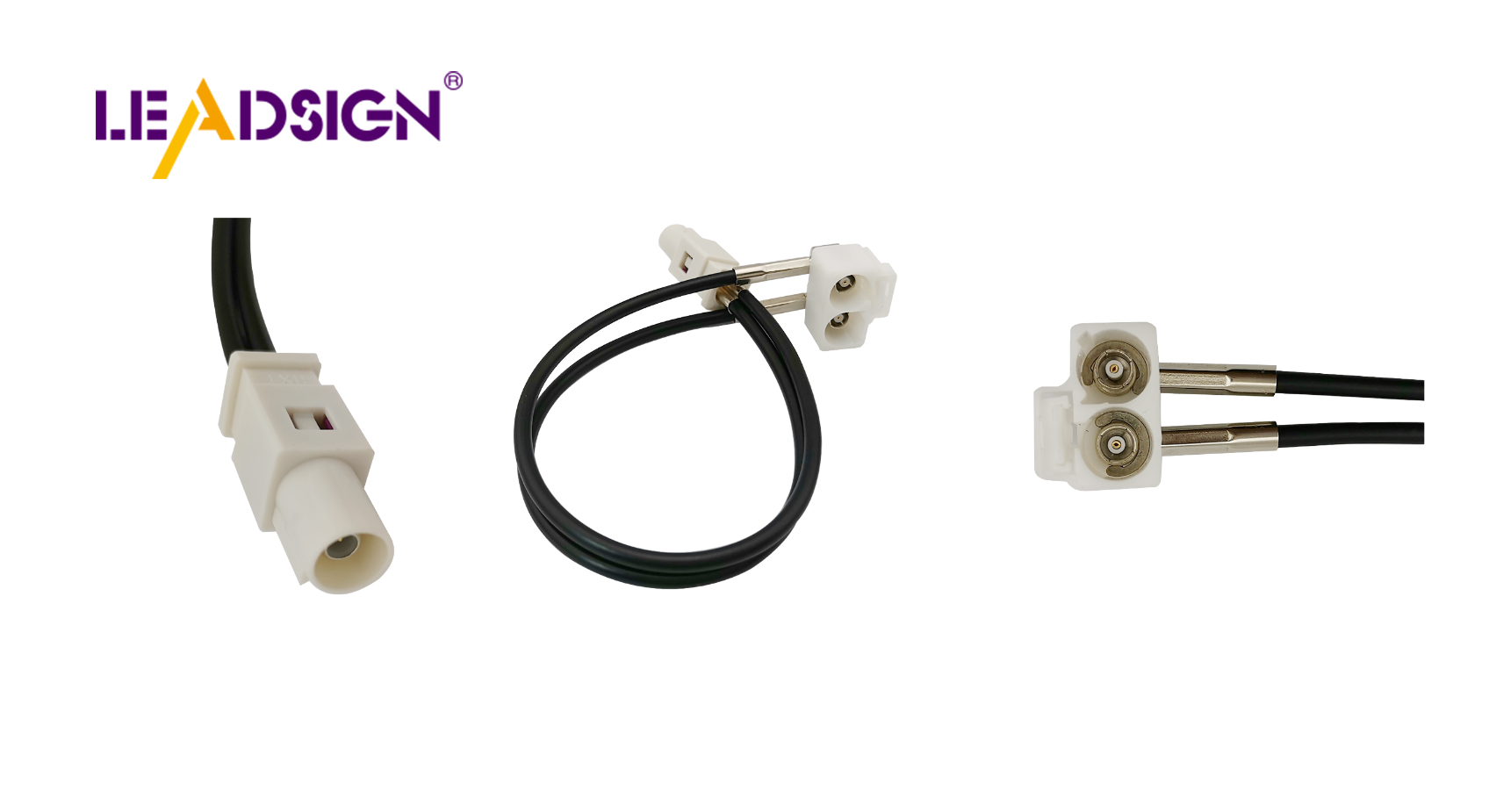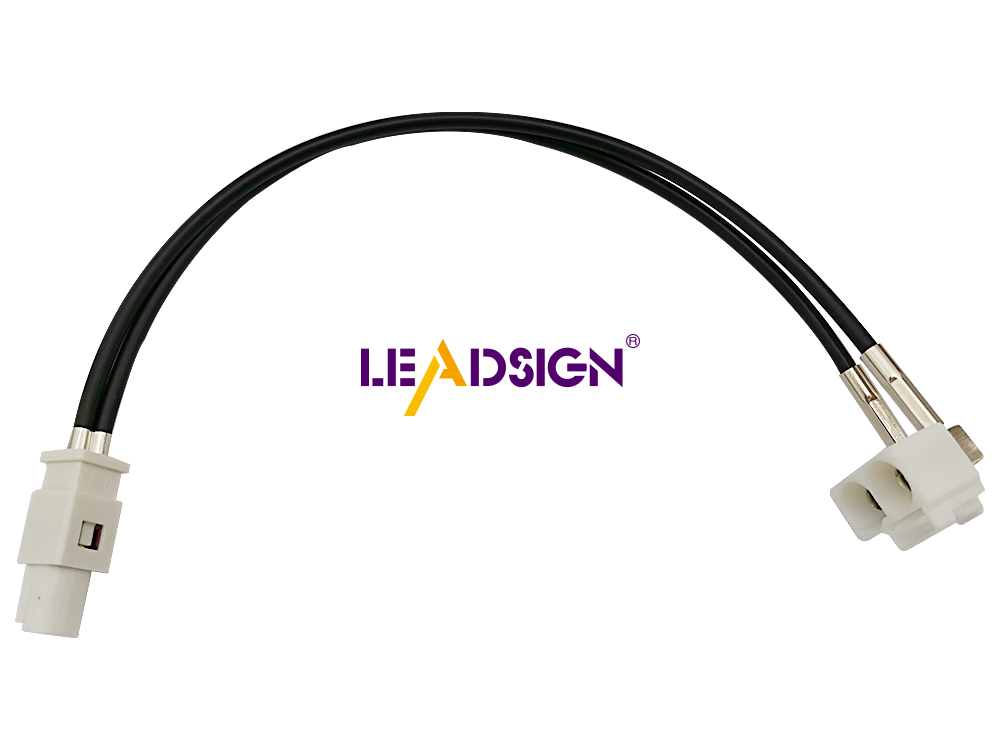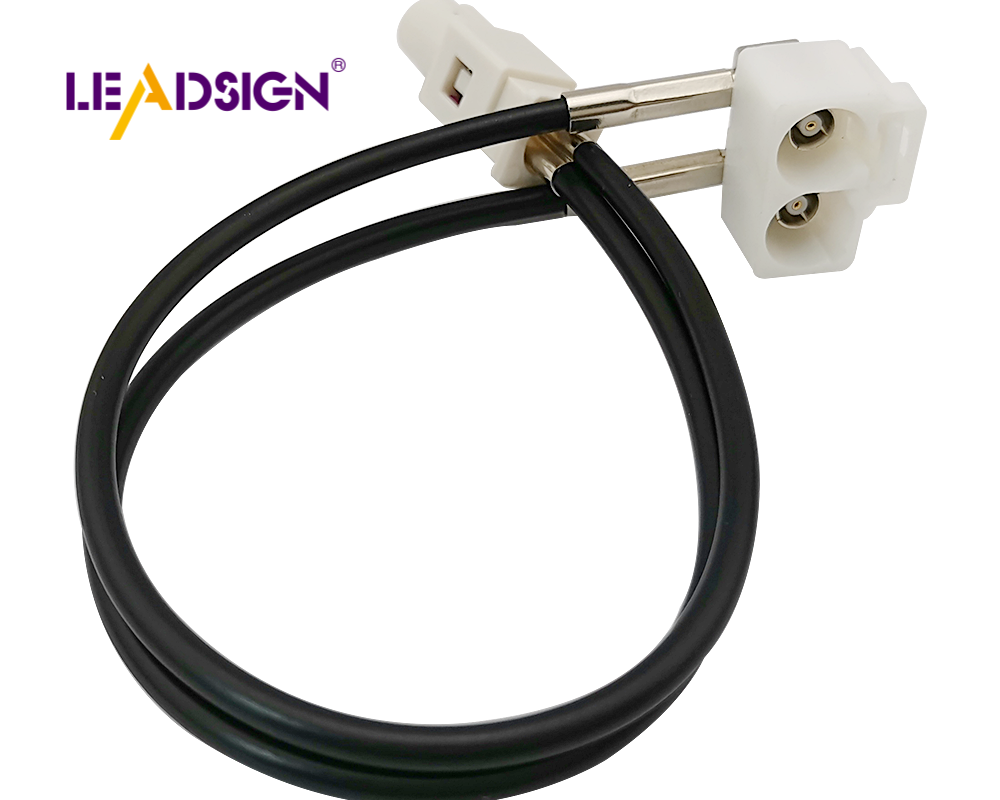How to Choose the Right 2 Pin Automotive Connector Wire

Choosing the right car wiring wire size is crucial for maintaining safety and optimal performance in your vehicle. The correct wire size prevents overheating and ensures efficient operation. It's essential to understand wire thickness, voltage drop, and current flow. The AWG system is a helpful tool for selecting appropriate wire sizes. Keep these factors in mind to ensure a reliable car electrical system.
Key Takeaways
Choosing the correct wire gauge is essential for preventing overheating and ensuring safe operation in your vehicle.
Understand the relationship between wire gauge and amperage to avoid electrical failures and maintain system efficiency.
Minimize voltage drop by selecting appropriate wire sizes, keeping lengths short, and ensuring secure connections.
Use wire size tables to quickly find the right wire for specific automotive applications, ensuring optimal performance.
Regularly inspect and maintain your car's wiring and connections to prevent wear and ensure reliability.
Select high-quality connectors that can withstand harsh conditions to enhance the durability of your car's electrical system.
Decide between soldering and crimping based on your needs, with crimping being a practical choice for most automotive applications.
Understanding Wire Gauge and Amperage

What is Wire Gauge?
Wire gauge means how thick a wire is. It's important for car wires. The AWG system measures this thickness. A smaller number means a thicker wire. Thicker wires carry more electricity. They are needed for big jobs like battery cables. Thinner wires work for small jobs like lights. Picking the right wire gauge stops overheating and damage.
Understanding Amperage
Amperage is the electric charge moving in a wire. It matters for car wires. If too much current flows, wires can overheat. This can cause fires or break things. Knowing your car's electric needs is key. It helps you pick a safe wire gauge.
Importance of Matching Wire Gauge and Amperage
Matching wire gauge and amperage keeps things safe. A thin wire with too much current can overheat. This makes resistance and voltage drop. It can hurt electric parts. A thick wire can be costly and hard to use. Right matching stops problems and keeps car systems working well.
Voltage Drop Considerations
What is Voltage Drop?
Voltage drop means losing voltage as electricity moves in a wire. This happens because the wire resists the flow, using some voltage. In cars, voltage drop can hurt how things work. If voltage drops too much, devices might not work well. For example, headlights could get dim, or controls might fail. Knowing about voltage drop helps fix and stop electric problems in cars.
Calculating Voltage Drop
To make sure car wires work well, find the voltage drop. Do these steps:
Identify the Wire Gauge: Find out the wire gauge. It shows resistance.
Measure the Length: Measure the wire's full length from start to end.
Determine the Current: Know the current (in amperes) going through the wire.
Use the Formula: Use this formula: Voltage Drop (V) = Current (I) x Resistance (R). Check wire charts for resistance.
By finding the voltage drop, you make sure car parts get enough power.
Minimizing Voltage Drop
Lowering voltage drop keeps car systems reliable. Try these tips:
Choose the Right Wire Gauge: Pick a bigger wire gauge to lower resistance. Bigger wires let more current flow easily.
Shorten Wire Lengths: Keep wires short. Long wires add resistance and drop voltage.
Ensure Good Connections: Tight and clean connections cut resistance. Bad connections raise voltage drop.
Regular Maintenance: Check car wires often for damage. Change bad wires to keep things working well.
By using these tips, you can control voltage drop and keep your car's electric system running smoothly.
Picking the Right Wire
Choosing the right wire for your car is important. The wire size must fit your car's needs. Follow these steps to pick the best wire.
Steps to Pick a Wire
Know what the wire is for.
First, find out what the wire will do in your car. Different jobs need different wires. A headlight wire is not the same as a battery wire. Knowing the job helps you pick a wire that won't overheat.
Use a table to find wire sizes.
Tables are helpful. They show recommended wire sizes based on wire length and needed power. These tables help keep voltage drop low, making things work well. Look at these tables to find the right wire size fast.
Things to Think About
Weather and wire cover.
Think about where the wire will be. Car wires face tough spots like heat and chemicals. Pick wires with good covers to last long. Covers keep wires safe from damage.
Fit with current connectors.
Make sure the wire fits your car's connectors. Wrong connectors can cause bad connections. Check your connectors and pick a wire that fits. This makes sure everything works well.
By using these tips, you can choose the right wire for your car. Good wire choice keeps your car safe and working well.
Ensuring Good Connections

Making sure your car's connections work well is important. It keeps your car safe and running smoothly. Let's see how to make sure your car's wires are ready.
Importance of Quality Connectors
Good connectors are key for your car's electric work. They keep electrical connections steady and strong. Automotive Engineer says top connectors handle tough conditions. They resist shaking, wetness, and heat. This makes them last long. Cableteque also says secure locks and seals matter, especially outside. Look for connectors with good IP ratings to block dust and water. Picking good connectors boosts your car's wire work.
Soldering vs. Crimping
To join wires, you can solder or crimp. Each way has good and bad points.
Soldering:
Pros: Makes a strong, lasting link. Best for no-change spots.
Cons: Needs skill and time. Harder to fix or change.
Crimping:
Pros: Fast and simple. Easy to take apart and fix.
Cons: Not as strong if done wrong. Needs right tools and parts.
Pick soldering or crimping based on what you need and can do. For most car jobs, crimping is a good mix of strength and ease.
Tips for Secure Connections
To keep your car's electric system working well, follow these tips for safe connections:
Use the Right Tools: Get good crimping tools and connectors. Right tools make tight electrical connections.
Check Compatibility: Make sure connectors fit the wire size and job. Wrong parts can work poorly.
Inspect Regularly: Often check your battery cables and other key spots for wear or rust. Fix bad parts fast.
Secure Connections: Ensure all links are tight. Loose links can drop voltage and hurt work.
Protect from Elements: Use covers or sealants to guard battery cables and links from wetness and dirt.
By using these tips, you keep your car's electric system strong and smooth. Good wiring and safe connections help your car run well.
Choosing the right car wire size is very important. It keeps your car safe and working well. Right wire size stops wires from getting too hot. It also stops dangers in your car's electric parts. Learn about wire thickness, voltage loss, and electric flow. This helps you pick the best wire. The right wire keeps your car safe and makes it work better. Use these tips to keep your car's electric system strong and safe.
FAQ
Why is picking cables and connectors important for car wiring?
Choosing the right cables and connectors is key for your car's electric system. It makes sure the wires work well and fit the car's needs. A good harness helps the car work safely and properly.
Why is it important to pick the right cable for cars?
Picking the right cable affects how your car works, stays safe, and lasts long. The right cable gives power well and stops problems like overheating. This choice keeps your car's electric parts working right.
How do I find the right wire size for my car?
To find the right wire size, think about the current the wire needs to carry and how long it is. Use the AWG system to help. A smaller AWG number means a thicker wire that can carry more current.
What happens if I use the wrong wire size?
Using the wrong wire size can cause overheating and electric problems. A wire that's too thin might not handle the current, causing it to overheat. A wire that's too thick can be too costly and hard to use.
How can I lower voltage drop in my car's wires?
To lower voltage drop, pick the right wire size, keep wires short, and make sure connections are good. Check for damage often to keep things working well. These steps help your car's electric parts get enough power.
What car wires should I think about using?
Think about using car wires that meet SAE J1128 rules. These wires are made for cars and are strong, don't rust, and can handle heat and shaking. They keep your car's electric system safe and working well.
How do I make sure my car's wire connections are good?
Use good connectors and the right tools for crimping or soldering. Check connections often for wear or rust and make them tight. Keep connections dry and clean to keep the electric system working well.
Why use good connectors in car wiring?
Good connectors make strong electric links. They stand up to shaking, wetness, and heat, lasting a long time. Good connectors make your car's electric system work better.
See Also
Understanding HSD Connectors Within Automotive Engineering
Why FAKRA Connectors Matter in Automotive Systems
Significance of HSD Connectors in Automotive Technology

